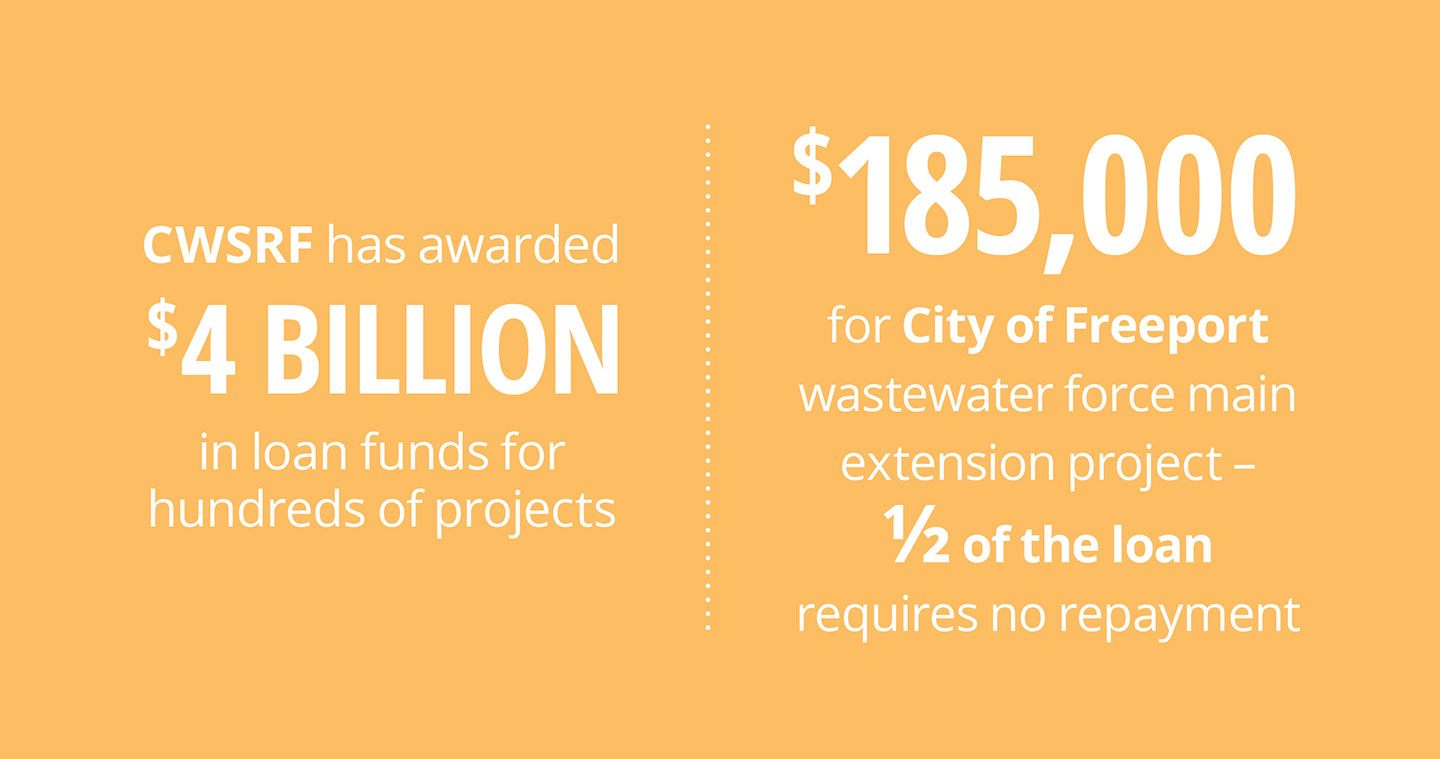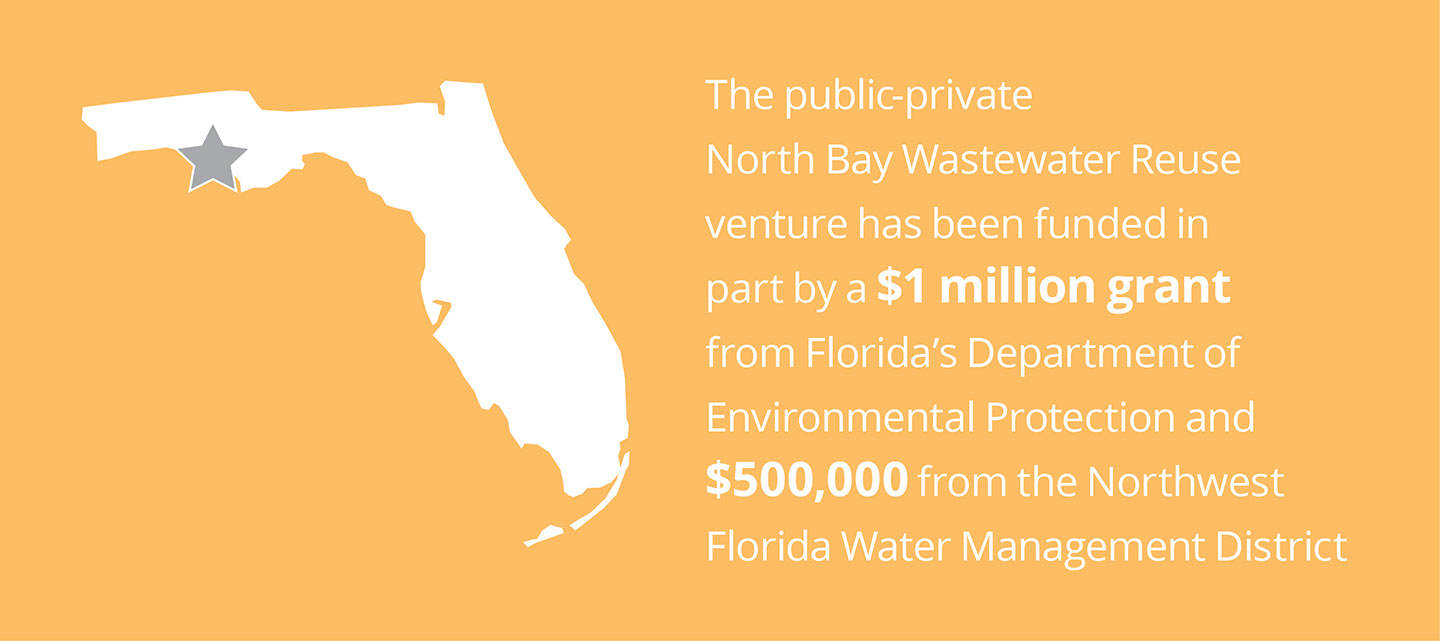As in many states across the U.S., communities throughout Florida are challenged by water management issues, including meeting potable water demand while protecting our natural resources. Florida’s Clean Water State Revolving Fund (CWSRF) is among
the important programs that support communities as they seek to plan, design, and build or upgrade wastewater, stormwater, and non-point source pollution prevention projects. Since its inception in 1989, the program has awarded approximately $4 billion
in loan funds for hundreds of projects.
Improving Water Quality
In the Panhandle area of Florida, the CWSRF has been a critical source of funding for many municipal projects. The City of Freeport, for example, recently finalized a loan agreement for $185,000 for a wastewater force main extension project, with half
of the loan requiring no repayment. The project will extend the force main along the US-331 corridor to allow the expansion of the collection system into areas bordering the Choctawhatchee Bay that are currently on septic tanks. Removing these tanks
will improve the water quality of the bay.

Building the Economy
Florida’s Rural Infrastructure Fund (RIF) is another important resource for communities looking to move forward with infrastructure projects that will encourage job creation, capital investment, and rural economic growth and diversity. For Calhoun
County’s Catalyst Site, an industrial park planned to attract business and industry and promote job growth, RIF grant funding was instrumental in supporting water, sewer, and stormwater improvements to increase the park’s marketability.

Innovative Partnerships
Another project that will help enhance water quality and water conservation in the Florida Panhandle is the North Bay Wastewater Reuse project. This forward-thinking initiative involves the design, permitting, and construction of approximately six miles
of reuse line from Bay County Utilities’ North Bay Wastewater Treatment Facility to Gulf Power’s Lansing Smith Power Plant in Panama City. The connection will enable Gulf Power to use up to five million gallons of reclaimed, treated wastewater
per day as cooling water for its natural gas generating unit.
The project will result in improved water quality in the St. Andrew Bay estuary, reduce nutrient loading, and enable Bay County’s North Bay plant to convert to a zero-discharge operation. The Smith Power Plant will benefit by transitioning from
the use of corrosive North Bay salt water to the treated effluent for its cooling towers, reducing maintenance and operation costs. Considered a win-win water reclamation project that will benefit the region for many years, the public-private venture
has been funded in part by a $1 million grant from Florida’s Department of Environmental Protection and $500,000 from the Northwest Florida Water Management District.